Breaking News: Discover the Dark Secret of the Middle Ages: The Shocking Truth Behind Judass Terrifying “Hanging Death” That Outshines Execution!
When we think of the Spanish Inquisition, the mind cant help but conjure images of unique and brutally effective methods of torture that seem almost unfathomable today. Indeed, some of the most infamous techniques of torment known in history were inflicted by the inquisitors upon those whom they believed had committed sins against the church and society. Among the notorious devices and practices used were the rack, the wheel, and water torture. However, a lesser-known yet preferred method by the Spanish Inquisition was the Judas Cradlea device that, surprisingly, they labeled as one of the more humane forms of agony.
This device, though deceptively simple in its design, consisted of a finely carved wooden pyramid mounted on three sturdy wooden legs, resembling a type of makeshift stoolthough I must admit, it is definitely not a seat that anyone would desire. Situated in the corner of a torture chamber, it was crafted to enable a naked individual, who was bound at the hands and feet by ropes connected to gears, to be suspended above it. The victim would then be gradually lowered onto the sharpened tip of the Judas Cradle, sometimes with added weights, until it violently tore into their pelvis.
The mastermind behind the creation of the Judas Cradle was none other than a legal scholar from Italy named Ippolito Marsili. While much credit has been attributed to the Spanish Inquisition for utilizing such devices, it is essential to recognize that Marsili’s ingenuity laid the groundwork. Marsili is also infamously known for introducing the water torture method, a practice that remains synonymous with his legacy.
He pursued his legal studies in Bologna alongside other notable figures such as Andrea Barbazza, Vincenzo Paleotti, and Alberto Cattani, eventually becoming a favored student of Felino Sandeo, who taught canon law in Ferara and Pisa. Marsili achieved his doctorate in both civil and ecclesiastical law in 1480 and, two years later, secured a chair in civil law, subsequently mentoring up-and-coming scholars like Antonio Burgos and Paolo d’Oria. His academic career was characterized by a multitude of lectures, many of which he later published.
However, Marsili is perhaps most infamously recognized for the various methods of torture he devised. Many judges of his era indeed had a proclivity for inflicting pain, and although Marsili viewed such acts as a necessary evil rather than a form of entertainment, his mind engineered some of the most abominable methods of torture imaginable.
The method of water torture originated simply from observing how water could erode stone, which inspired Marsilis twisted creativity in developing means to induce suffering. Furthermore, he also established the practice of forced vigils, a technique where prisoners would be forced to sit while being watched by torturers, who kept them awake for prolonged periodssometimes up to 40 consecutive hours.
As for the Judas Cradle, the specifics of its conception remain somewhat obscure in historical records; however, it can be presumed that Marsili and others skilled in ecclesiastical law spent considerable time brainstorming torturous techniques, resulting in the invention of this terror-inducing device.
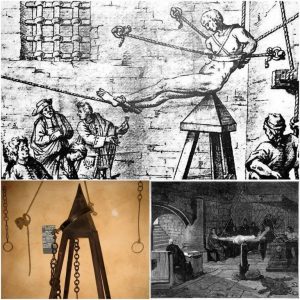
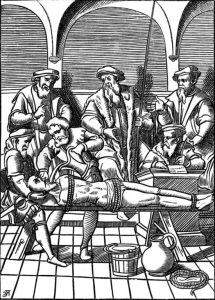
According to historical accounts, Marsilis rationale behind many of his torture techniques was that they were more humane than others, specifically because they did not involve burning flesh or breaking bones. Even the Judas Cradle purportedly aimed to keep the individual awake and deprived of sleep, although the torturers inevitably found ways to inflict anguish through this seemingly “less violent” approach.
Moreover, it did not help that these wooden pyramids were rarely sanitized, which led to countless prisoners succumbing to infections caused by dried blood and fecesthe very essence of horror in the Inquisition’s chambers.
What exactly was the Judas Cradle? It was an instrument of torment that, although it appeared straightforward, was brutally effective in its design. Shaped like a pyramid with a sharp point, it stood upon four robust legs. Victims would be hung from the ceiling by ropes or chains and gradually lowered onto the sharp tip of the pyramid, which would penetrate their most sensitive areas, often targeting the genitals or the anus. This cruel design ensured that the victims experienced excruciating pain, binding them in a nightmarish scenario with no escape.
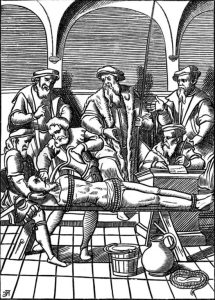
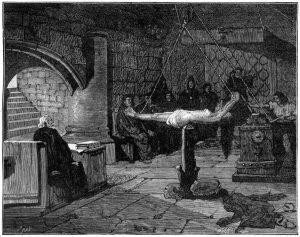
Through variations of the Judas Cradle, the inquisitors amplified both the physical agony and psychological terror experienced by the victims. Additional weights were sometimes strapped to the legs or body of the prisoner, intensifying the downward force and exacerbating injuries. The tip of the pyramid might also be modified with sharp spikes or objects to maximize the suffering of the tortured.
Torturers would even rock or rotate the device, making the sharp tip penetrate more decisively into the victim’s flesh, generating a level of distress that bordered on unimaginable.
The entire process of torment with the Judas Cradle was prolonged and relentless. As victims were slowly lowered, the piercing pain of the pyramid was complemented by continuous pressure. The weight of their bodies or added burdens forced them further down into the device. Many were left in this hellish contraption for hours or even days on end, resulting in:
Excruciating pain: The penetration of sensitive areas caused unimaginable suffering, often accompanied by intense bleeding.
Permanent bodily harm: Deep wounds and infections were almost unavoidable, ultimately leading to long-term disfigurement or death.
Psychological humiliation: Being exposed and tortured in such a vulnerable state inflicted a profound sense of shame, actively destroying the victims spirit.
Due to the unbearable suffering inflicted by this method, many victims swiftly confessed to the alleged crimes laid before them, desperate to end their misery. Yet, even such confessions rarely resulted in any reprieve, with many dying during or shortly after torture due to grievous complications.
Historically, the Judas Cradle gained notoriety during the Spanish Inquisitiona dark period characterized by brutal persecution of those labeled as heretics. It became a favored implement among inquisitors to extort confessions from their victims, regardless of their actual culpability.
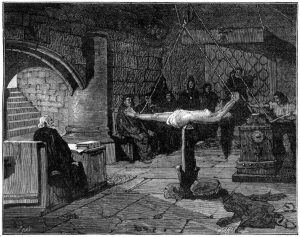
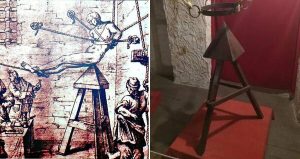
Although primarily associated with the Spanish Inquisition, variations of the Judas Cradle were also implemented in other regions of medieval Europe, especially in Germany. Today, replicas of such devices are displayed in torture museums, serving as macabre reminders of a gruesome past. The Judas Cradle was more than just a physical instrument; it emerged as a haunting emblem of absolute power and control held by the religious and political authorities of that era.
In direct comparison with other torture devices of the medieval period, such as the Spanish Donkey, similarities are evident between the two. Both employed a wedge-like sharp structure to inflict pain. However, the Judas Cradle was viewed as particularly more brutal due to the methodical suspension and gradual descent of victims, coupled with prolonged stages of torture. While the Spanish Donkey was primarily intended to split the victim’s body by seating them on a sharp edge, the Judas Cradle targeted the more sensitive parts of the body, making it exceptionally terrifying.
Today, the legacy of the Judas Cradle is encapsulated in various torture museums across Europe, particularly in Germany, serving as a testament to humanity’s capacity for cruelty. This relic serves not merely as a tool of torture; it symbolizes the abuse of power, the loss of humanity, and the unspeakable horrors individuals can inflict upon one another.
The existence of the Judas Cradle is a poignant reminder of the necessity to protect human rights and stave off the recurrence of such atrocious acts. It also acts as a cautionary tale, highlighting that in times characterized by ignorance and fanaticism, humanity is susceptible to committing unforgivable cruelty.
To conclude, the Judas Cradle, with its stark yet relentless design, remains one of the most horrifying instruments of torture recorded in human history. Used to inflict agony, humiliation, and to extract confessions, it has left an indelible mark on our collective past. While the Middle Ages are long gone, the stories surrounding the Judas Cradle continue to serve as a powerful reminder of humanity’s potential for darkness in its most trying times. Although this infernal device may have faded from the annals of history, the lessons it embodies remain vital to ensure that such acts of cruelty are never repeated.
Leave a Reply